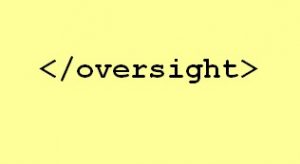 After defendant left plaintiff’s employment to co-found a competing company, plaintiff sued defendant personally for copyright infringement based on the new company’s website’s resemblance to plaintiff’s website. The infringement theory was interesting – plaintiff alleged that defendant did not commit the infringement himself, but that he was secondarily liable for playing a significant role in the direct infringement by the new company’s employees.
After defendant left plaintiff’s employment to co-found a competing company, plaintiff sued defendant personally for copyright infringement based on the new company’s website’s resemblance to plaintiff’s website. The infringement theory was interesting – plaintiff alleged that defendant did not commit the infringement himself, but that he was secondarily liable for playing a significant role in the direct infringement by the new company’s employees.
Defendant moved to dismiss the copyright infringement claim. The court granted the motion.
There are two types of secondary copyright infringement liability: contributory liability and vicarious liability. A defendant is a contributory infringer if it (1) has knowledge of a third party’s infringing activity, and (2) induces, causes, or materially contributes to the infringing conduct. See Perfect 10, Inc. v. Visa Int’l Service Ass’n, 494 F.3d 788, 795 (9th Cir.2007) (quoting Ellison v. Robertson, 357 F.3d 1072, 1076 (9th Cir.2004)). In the context of copyright law, vicarious liability extends beyond an employer/employee relationship to cases in which a defendant has the right and ability to supervise the infringing activity and also has a direct financial interest in such activities. A & M Records, Inc. v. Napster, Inc., 239 F.3d 1004, 1022 (9th Cir.2011) (quoting Fonovisa, Inc. v. Cherry Auction, Inc., 76 F.3d 259, 262 (9th Cir.1996)).
In this case, the court held that plaintiff had not alleged enough detail to state a claim of secondary liability against defendant. Instead, the complaint simply recited the elements of contributory and vicarious liability. Specifically, plaintiffs failed to allege:
- That defendant was uniquely in possession of the original material on plaintiff’s website, but rather plaintiffs alleged that the material was publically available on the website for anyone to read and copy.
- How defendant, as a non-employee (but founder) of the new company, was personally responsible for the content of the new company’s website. (Interestingly, the court held it was not sufficient to allege that defendant was a founder of the new company. Although plaintiffs alleged some factual details about what was actually copied from plaintiff’s website, they alleged no factual details as to defendant’s personal involvement in the infringement.)
- Facts that suggested that defendant induced the new company to infringe plaintiff’s website.
- Facts that suggested that defendant had the right to control and supervise the new company’s employees who were involved in the alleged infringement.
Plaintiff’s attempts to impose secondary liability were (if they had worked) a clever method for accomplishing the same objective as piercing the corporate veil. Granular control by the individual founder could be equated with the “alter ego” aspect of the veil-piercing analysis. The absence of such specific control by the individual defendant, however, left the possibility of liability only with the company.
BioD, LLC v. Amnio Technology, LLC, 2014 WL 268644 (D.Ariz. January 24, 2014)
